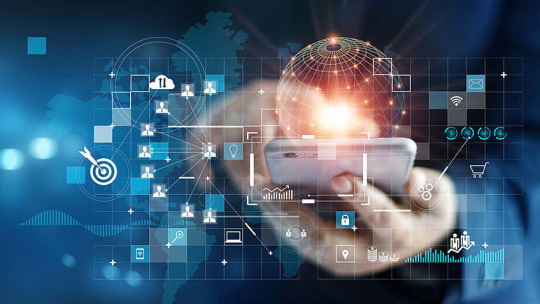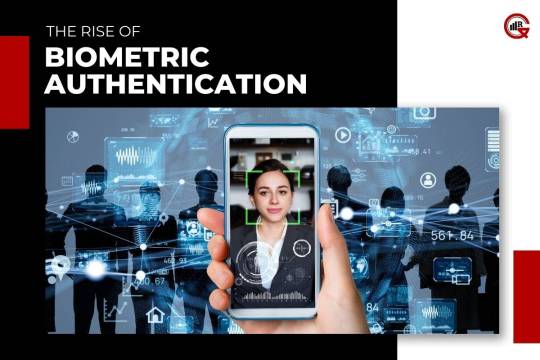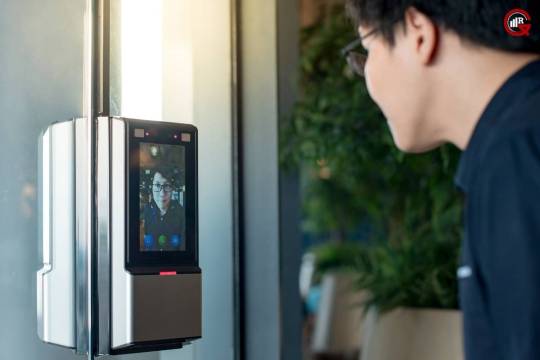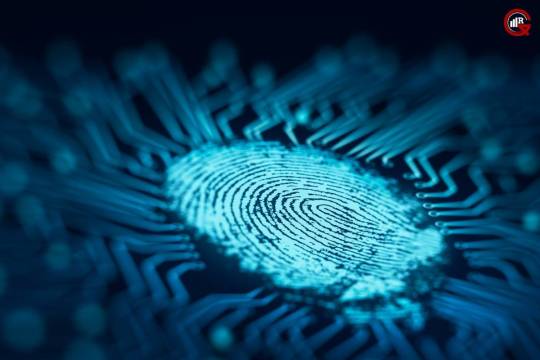#biometricsecurity
Explore tagged Tumblr posts
Text
The Ultimate Guide to Biometric Access Control System Integration | Secure Access
Discover how to integrate biometric access control systems seamlessly. Enhance security, streamline authentication, and protect your premises with cutting-edge biometric technology.
0 notes
Text
Facial Recognition and Privacy: Navigating Market Growth in Regulated World
The global facial recognition market size is expected to reach USD 15.84 billion by 2030 according to a new report by Grand View Research, Inc. The market is anticipated to expand at a CAGR of 14.9% from 2023 to 2030. Facial recognition is a contactless biometric solution that is a critical factor contributing the market growth. Contactless solutions enable easy deployment in consumer devices. It is also effortless and convenient to use, further contributing to rising adoption. Apart from individual identities, the technology can gather demographic data on crowds; thus, increasing its usability. Such factors are anticipated to drive market growth.

Facial recognition is highly used for security and law enforcement applications, as it is led mainly by the need to combat terrorism and crime. For instance, in the U.S., 26 states permit law enforcement agencies to access facial recognition systems to perform searches against the databases of ID photos and driver’s licenses, to find drug dealers, bank robbers, amongst others who have left behind the images on social media platforms. Also, facial recognition CCTV systems are being used to improve performance in conducting public security missions, such as find missing children or adults, identifying and tracking criminals, and accelerating investigations. Furthermore, the trend of KYC (Know-Your-Customer) has undoubtedly boosted the growth of facial recognition in retail and marketing.
Facial Recognition Market Report Highlights
End-use industries have started integrating facial recognition into their business processes to streamline their operations. Facial recognition technology is gaining momentum as it assists end-user organizations to become more efficient and result-oriented. The growing adoption of facial recognition is encouraging new entrants to venture into the marketplace by offering niche application-specific products and solutions
In terms of technology, the 3D segment captured the largest revenue share in 2022. The technology is gaining popularity due to its attributes such as detection efficiency and high accuracy, which makes it suitable for high-security areas such as airports, education and research, retail, healthcare, and police services.
The banking and financial services industry is one of the major verticals for the deployment of facial recognition technology as consumers are increasingly transitioning towards mobile banking. Financial institutions use facial-recognition software to provide an additional layer of security to mobile banking applications to authenticate users
For More Details or Sample Copy please visit link @: Facial Recognition Market Report
Facial recognition technology is being combined with the latest marketing advancements to improve customer experience. For instance, in April 2021, Sberbank, a Russian banking company, is expanding its footprints in food delivery, taxi services, cloud computing, and cybersecurity. For this, the company launched facial recognition payments known as face pay to make payments using at a glance pay option during checkout. Thus, offering a quick payment service compared to paying with cash or a payment card. Therefore, the market has a vast opportunity in different verticals, including security and surveillance, healthcare, retail, and transportation. For another instance, in June 2019, Ayonix Corporation launched its IP camera-embedded application, namely the AICam Platform. The application can execute high-performance face detection and matching. The company demonstrated this product at the annual security technology conference called ISC West.
3D recognition is a newly emerging trend in the market for facial recognition that aims to provide more accuracy and better authentication. 3D facial recognition uses the unique characteristics of an individual’s face, such as the face curves, the shape of the nose, the chin, to identify the individual. With the introduction of 3D facial recognition, identification has taken a step toward recognizing an individual’s face even if it is dark and can identify the person at different angles (up to 90 degrees). Although 2D face recognition has made significant progress over the years, its accuracy and authenticity are highly dependent on the conditions of light and individual poses. For instance, Ayonix Corporation (Japan) is a developer of 3D face recognition technologies. It uses an algorithm that converts 2D still images or videos into data, which is then analyzed to reconstruct faces in 3D form. It also has a patented 3D recognition engine that captures a facial image and identifies critical points at the eyes, nose, and mouth. Besides, it can identify age, gender, and person-specific features from the image and match them from the images stored in databases to generate a matching score between 0.0 and 0.1.
The Asia Pacific (APAC) region is estimated to project the highest growth rate in the market. This is due to the increased adoption of facial recognition technology in different verticals. For instance, in September 2019, NEC Corporation, Japan-based biometry solutions provider, announced a partnership with Seven Bank, Ltd., a Japanese Bank, to develop ATMs that incorporate facial recognition technology. In addition to facial recognition technology, other technologies used for the development of ATMs include Artificial Intelligence (AI), the Internet of Things (IoT), and QR codes. IoT and AI would help in detecting warning of component failures and predicting cash demand more accurately, which would further help in streamlining ATM operations.
List of Key Players in the Facial Recognition Market
Aware, Inc.
Cognitec Systems GmbH
Ayonix Corporation
Thales
Fujitsu
FacePhi
NEC Corporation
Onfido
TECH5
We have segmented the global facial recognition market based on technology, application, end-use, and region
#FacialRecognition#Biometrics#ArtificialIntelligence#TechTrends#MarketResearch#DigitalTransformation#FacialRecognitionMarket#BiometricSecurity#AIinSecurity#SurveillanceTech#IdentityVerification#SmartSecurity#BiometricTechnology#AIInnovation
0 notes
Text
10 Futuristic Features for a Successful Medical Website

In 2024, a successful medical website integrates cutting-edge technologies to revolutionize user experience, data security, and patient care. Here are 10 futuristic features for medical websites:
AI-Powered Symptom Checkers: Offer instant preliminary diagnoses, improve healthcare accessibility, and provide personalized recommendations using machine learning and medical databases.
Virtual Reality (VR) for Education: Use VR to visually educate patients on treatments and medical conditions, reducing anxiety and improving engagement.
Chatbots: Enhance accessibility with 24/7 patient support for appointment scheduling, FAQs, and more, using AI-driven conversational platforms.
Voice Search: Enable faster, error-free searches and appointment bookings, improving accessibility for elderly and visually impaired patients.
Predictive Analytics: Leverage patient data to anticipate health risks, optimize treatment plans, and provide personalized care using machine learning and data mining.
Wearable Devices Integration: Monitor patient health remotely and offer real-time data insights via connected devices like fitness trackers.
Blockchain for Secure Data Sharing: Enhance privacy and prevent data breaches with decentralized storage and cryptographic algorithms.
Biometric Authentication: Add layers of security using fingerprint or facial recognition to protect patient data.
Augmented Reality (AR): Visualize treatments or conditions through AR, improving patient understanding and communication with providers.
IoT-Enabled Devices: Use connected medical devices for continuous monitoring and improved patient care outside clinical settings.
These features use advanced technologies like AI, IoT, blockchain, and AR/VR to create efficient, secure, and user-friendly healthcare platforms, enhancing patient satisfaction and provider efficiency.
Read More
#MedicalWebsiteDevelopment#FuturisticWebFeatures#AIInHealthcare#BlockchainTechnology#VirtualReality#AugmentedReality#IoTInHealthcare#WearableDevices#PredictiveAnalytics#VoiceSearch#BiometricSecurity#HealthcareInnovation#UserExperience#MedicalTechTrends#Web3InHealthcare
0 notes
Text
Introducing the SECUREYE BIOMETRIC SB8CB – Advanced Security at Your Fingertips!
I-markt offers you the best quality and lowest price SECUREYE BIOMETRIC SB8CB, a cutting-edge solution designed for modern businesses and homes. This smart biometric device offers seamless access control with top-notch security features.

#Secureye#BiometricSecurity#FingerprintScanner#AccessControl#SmartSecurity#RFID#SecuritySolutions#iMarkt
1 note
·
View note
Text
Frequently Asked Questions on eKYC For Remote Platforms

eKYC (Electronic Know Your Customer) is a digital process that enables remote identity verification, making it easier for users to complete onboarding without the need for physical paperwork. This process is crucial for ensuring security, regulatory compliance, and a seamless customer experience on remote platforms. eKYC typically involves submitting government-issued IDs and may include biometric verification, all of which can be done via mobile devices. It's a quick and secure method, with most processes completed in minutes, ensuring your data is protected through advanced encryption and legal recognition in many countries
#eKYC#DigitalIdentity#RemoteVerification#Fintech#OnlineSecurity#CustomerOnboarding#RegTech#DigitalTransformation#Compliance#DataPrivacy#MobileVerification#BiometricSecurity#DigitalOnboarding#IdentityVerification
0 notes
Text

🔒 Elevate Your Security with Fingerprint Verification Services! 🔒 Introducing our state-of-the-art Fingerprint Verification Services – because your security deserves the best. 🛡️✨ 🔹 Unmatched Precision: Ensure accurate identification with cutting-edge biometric technology. 🔹 Enhanced Security: Protect your assets and information with the highest level of security. Trust us to safeguard your future. 🔐🌟
#FingerprintVerification#BiometricSecurity#SecureSolutions#TechInnovation#SafetyFirst#AdvancedSecurity#SeamlessIntegration
0 notes
Text
0 notes
Text
The Rise Of Biometric Authentication

In an era where digital security is paramount, traditional methods of authentication such as passwords and PINs are increasingly being supplemented—or even replaced—by biometric authentication. It leverages unique physical or behavioral characteristics to verify an individual’s identity, offering a more secure, convenient, and reliable means of access control. In this article, we explore the evolution, applications, benefits, and challenges of biometric authentication in today’s digital landscape.
The Evolution of Biometric Authentication:
The concept dates back centuries, with ancient civilizations using physical characteristics such as fingerprints and facial features for identification purposes. However, it wasn’t until the advent of modern computing and advances in biometric technology that authentication became feasible on a large scale. Over the years, biometric verification has evolved from rudimentary fingerprint scanners to sophisticated systems capable of recognizing a wide range of biometric traits, including fingerprints, iris patterns, voiceprints, facial features, and even behavioral patterns such as typing speed and gait.
Applications of Biometric Authentication:

It has found widespread adoption across various industries and applications, including:
Mobile Devices: Many smartphones and tablets now feature identity verification mechanisms such as fingerprint scanners, facial recognition, and iris scanners, allowing users to unlock their devices securely and conveniently.
Access Control: Identity authentication is commonly used to control access to physical spaces such as office buildings, government facilities, and high-security areas. Biometric door locks, fingerprint scanners, and facial recognition systems are deployed to ensure that only authorized individuals can enter.
Financial Services: Banks and financial institutions utilize biometric identification to verify the identity of customers accessing online banking services, authorizing transactions, and withdrawing cash from ATMs.
Healthcare: Biometric verification is employed in healthcare settings to secure electronic health records, control access to sensitive medical information, and prevent unauthorized personnel from accessing restricted areas.
Border Security: Identity Verification is increasingly used at border crossings and airports for identity verification and passenger screening, enhancing security and expediting the travel process.
Benefits of Biometric Authentication:
The adoption offers several benefits over traditional authentication methods, including:
Enhanced Security: Biometric traits are unique to each individual and difficult to replicate, making biometric verification more secure than passwords or PINs, which can be easily forgotten, stolen, or compromised.
Convenience: Identity verification eliminates the need to remember complex passwords or carry physical tokens, streamlining the authentication process and improving user experience.
Accuracy: Identity authentication systems boast high levels of accuracy and reliability, minimizing false positives and false negatives and reducing the risk of unauthorized access.
Scalability: Biometric authentication can scale to accommodate large user populations without sacrificing security or performance, making it suitable for organizations of all sizes.
Compliance: Biometric verification helps organizations comply with regulatory requirements such as the General Data Protection Regulation (GDPR) and the Health Insurance Portability and Accountability Act (HIPAA), which mandate stringent data protection measures and identity verification standards.
Challenges and Considerations:

Despite its many benefits, biometric authentication is not without its challenges and considerations. These include:
Privacy Concerns: Biometric data is highly sensitive and raises concerns about privacy, data protection, and consent. Organizations must implement robust privacy policies and security measures to safeguard biometric information from unauthorized access or misuse.
Biometric Spoofing: Biometric systems are vulnerable to spoofing attacks, where adversaries attempt to bypass security measures by presenting fake or stolen biometric data. To mitigate this risk, organizations must deploy anti-spoofing techniques and biometric liveness detection algorithms.
Interoperability: Biometric verification systems may encounter interoperability issues when integrating with existing IT infrastructure or third-party applications. Standardization efforts and open-source solutions can help improve interoperability and compatibility.
User Acceptance: Some users may be hesitant to adopt identity verification due to concerns about reliability, accuracy, or intrusiveness. Educating users about the benefits and limitations of biometric technology and addressing their concerns can help increase acceptance and adoption rates.
Legal and Ethical Considerations: Identity Verification raises complex legal and ethical issues related to consent, data ownership, and discrimination. Organizations must navigate regulatory requirements and ethical considerations to ensure compliance and uphold user rights and privacy.
Advancements in Biometric Technology:
Recent advancements in biometric technology have expanded the capabilities and applications of biometric verification. These advancements include:
Multimodal Biometrics: Multimodal biometric systems combine multiple biometric modalities, such as fingerprints, facial recognition, and iris scans, to enhance accuracy and security. By utilizing multiple biometric traits, multimodal systems offer greater robustness and resilience against spoofing attacks.
Deep Learning and AI: Deep learning algorithms and artificial intelligence (AI) techniques are increasingly being employed to improve biometric recognition accuracy and performance. These advanced algorithms can analyze complex patterns and features in biometric data, leading to more reliable identification and authentication results.
Continuous Authentication: Continuous authentication solutions continuously monitor users’ biometric traits throughout their interaction with a system or application, providing ongoing verification and enhancing security. This approach minimizes the risk of unauthorized access by detecting anomalies or unauthorized users in real time.
Biometric Fusion: Biometric fusion techniques combine information from multiple biometric sources to enhance authentication accuracy and reliability. By fusing data from different biometric modalities or sensors, such as fingerprint and facial recognition, biometric fusion systems can improve recognition rates and reduce false acceptance and rejection rates.
Passive Biometrics: Passive identity verification methods leverage behavioral biometrics, such as typing dynamics, gait analysis, and voice recognition, to authenticate users without requiring explicit action or interaction. Passive biometrics offer seamless and frictionless authentication experiences while enhancing security and user privacy.
Emerging Trends :

Looking ahead, several emerging trends are shaping the future of biometric authentication:
Wearable Biometrics: Wearable devices equipped with biometric sensors, such as smartwatches and fitness trackers, are becoming increasingly popular for authentication and identity verification. These devices offer convenient and unobtrusive biometric identification options, particularly in scenarios where traditional authentication methods are impractical or inconvenient.
Behavioral Biometrics: Behavioral biometrics, which analyze patterns of user behavior, are gaining traction as a complementary authentication method to traditional biometric modalities. Behavioral biometrics can detect subtle cues and anomalies in user behavior, such as typing speed, mouse movements, and touchscreen interactions, to authenticate users with high accuracy.
Biometric Cryptography: Biometric cryptography combines biometric verification with cryptographic techniques to enhance security and privacy in digital transactions and communications. By integrating biometric data into cryptographic protocols, biometric cryptography ensures secure and tamper-proof authentication and key exchange processes.
Zero-Trust Security: Zero-trust security models, which assume that every user and device accessing a network is untrusted until proven otherwise, are driving the adoption of biometric authentication as part of a comprehensive security strategy. It plays a critical role in verifying the identity of users and devices and granting access to resources based on contextual factors and risk assessments.
Decentralized Biometrics: Decentralized biometric identification solutions, which store and process biometric data locally on user devices rather than central servers, are gaining popularity due to their privacy-enhancing features and resistance to centralized data breaches. Decentralized biometrics give users greater control over their biometric data and reduce the risk of unauthorized access or misuse.
Conclusion:
In conclusion, biometric authentication represents a significant advancement in digital security, offering unparalleled levels of security, convenience, and reliability. From mobile devices and access control systems to financial services and healthcare, identity verfication is revolutionizing the way we verify identity and secure sensitive information. However, as biometric technology continues to evolve and proliferate, organizations must address privacy concerns, mitigate security risks, and navigate legal and ethical considerations to ensure responsible and ethical deployment of biometric authentication solutions in today’s digital world.
0 notes
Text
Facial Recognition Software Development Solutions
Facial Recognition software is revolutionizing security measures, offering precise identification and access control. With this cutting-edge technology, businesses ensure enhanced safety protocols and streamlined operations. Solutions include enhanced security, efficient time tracking, fraud prevention, and improved user experience. ThirdEye AI leads the forefront of this innovation, offering state-of-the-art facial recognition solutions. Experience the future of security with ThirdEye AI, where safety meets sophistication.
#FacialRecognition#Facial Recognition Software development Solutions#BiometricSecurity#Facial recognition based attendance solution#ThirdEyeAI
0 notes
Text
How to Install a Biometric Access Control System: Step-by-Step Guide
Learn how to install a biometric access control system with our comprehensive step-by-step guide. Secure your property with the latest in access technology.
0 notes
Text

Secure your business with Low Voltage Houston's advanced electronic security solutions in Houston, TX. Offering surveillance, access control, intrusion detection, and more.
#LowVoltageHouston#HoustonSecurity#ElectronicSecurity#BusinessProtection#InnovativeSecurity#SecuritySolutions#InteractiveSecurity#MobileSecurity#HDsurveillance#AccessControl#BiometricSecurity#IntrusionDetection#ProfessionalInstallation#SecuritySupport#CustomizedSecurity#TechSecurity#LocalExpertise#SecureYourBusiness#HoustonSafety#TailoredSecurity
1 note
·
View note
Text
Multifacor Authentication Explained
Check the YouTube channel:
#cybersecurity#MFA#MultiFactorAuthentication#2FA#AuthenticationSecurity#SecureLogin#PasswordlessAuthentication#BiometricSecurity#CyberSecurity#IdentityProtection#DataSecurity#SecureAccess#cyberattacks#cybercrime#hackers#hacking
0 notes
Text
The Future of Vibez Smartwatches: What to Expect in the Next Generation
Vibez Smartwatches have constantly pushed the envelope in terms of innovation and user experience in the rapidly developing field of wearable electronics. It's obvious that there will be even more fascinating advances in the future as we look forward the next generation of these wonderful gadgets.
Improved Health and Fitness Tracking: Vibez will presumably give health and fitness aspects even more priority. Users may expect more precise heart rate monitoring, sleep tracking, and even stress level analysis thanks to upgraded sensors and algorithms. Your ideal wellness companion will be the next-generation Vibez.
Extended Battery Life: The short battery life of smartwatches has been a regular source of worry. With better power management, the next Vibez will solve this and allow you to remain connected for extended periods of time without worrying about needing to recharge often.
Vibez has always been on the cutting edge of fashion and design. The next generation is probably going to provide even more svelte designs with interchangeable watch faces and bands to fit personal preferences. Expect a smartwatch that perfectly combines style and utility.
Future Vibez Smartwatches will certainly have more advanced connectivity. Your life will be more convenient than ever thanks to improved interoperability with smartphones, Internet of Things devices, and smart homes.
Integration of augmented reality (AR): According to rumours, Vibez is looking into ways to include AR into its forthcoming smartwatches. Imagine your Vibez wristwatch projecting important information into your range of view, making navigation and daily chores easier.
Gesture Controls: Touchscreens have always predominated, but the next Vibez might have gesture controls. These simple gestures will change the way you interact with your iPhone. For example, you can wave to answer a call or spin your wrist to switch between applications.
Enhanced Security: As our lives grow more intertwined with Vibez smartwatches, security becomes more important than ever. You can rely on modern biometric identification techniques, such as fingerprint or retina scanning, to protect your data and privacy.
Eco-friendly Materials: To appeal to customers who are concerned about the environment, Vibez is likely to use more eco-friendly and sustainable materials in its smartwatches.
Affordable Options: Vibez has always provided top features at reasonable costs. Modern technology will certainly become more widely available when the following generation follows this path.
To sum up, the future of Vibez Smartwatches seems to be an intriguing fusion of health-focused features, increased battery life, svelte designs, enhanced connectivity, and cutting-edge technology like augmented reality and gesture controls. Vibez is well-positioned to take the lead in defining the next phase of wearable technology because to its dedication to consumer delight and cost. Watch for these revolutionary innovations that will certainly improve our everyday life.
#VibezFuture#WearableInnovation#HealthTechAdvancements#NextGenSmartwatches#BatteryLifeUpgrade#FashionableTech#ARIntegration#GestureControls#BiometricSecurity#EcoFriendlyMaterials#AffordableTech#SmartwatchDesign#ConnectedLifestyle#IoTIntegration#SustainableTech#TechInnovations#SmartwatchFeatures#DigitalHealth#FutureTechTrends#VibezRevolution
1 note
·
View note
Video
youtube
🔍 Futuristic Digital Biometric Fingerprint Scanner – Next-Level Security...
#youtube#BiometricSecurity FingerprintScanner AI FutureTech Surveillance DigitalIdentity CyberSecurity SmartTechnology TechTrends Shorts
0 notes
Text
"Travel Smart, Spend Smarter: The Rise of Forex Prepaid Cards Market 2025–2033 🌍💳"
Forex Prepaid Cards Market has become an indispensable component of global finance, offering seamless currency exchange and international transaction solutions for individuals and businesses. These cards provide fixed exchange rates, enhanced security, and unparalleled convenience, making them a preferred choice for travelers, expatriates, and corporations managing international expenses.
To Request Sample Report: https://www.globalinsightservices.com/request-sample/?id=GIS32318 &utm_source=SnehaPatil&utm_medium=Article
The market is experiencing robust growth, driven by globalization, increased international travel, and a rising demand for secure and cost-effective transaction methods. Among its segments, the consumer category leads, catering to frequent travelers and expatriates seeking hassle-free currency exchange. Meanwhile, corporate cards are gaining momentum as businesses adopt them for efficient travel expense management and streamlined financial operations.
North America dominates the market, supported by its advanced financial infrastructure and widespread adoption of digital payment solutions. Europe ranks second, benefiting from its strong cross-border trade networks and focus on secure financial transactions. The United States emerges as the top-performing country, driven by technological innovation and a high preference for digital financial products. The United Kingdom follows closely, thanks to its dynamic financial sector and increasing outbound travel activities.
The market offers diverse options, including single-currency and multi-currency cards, virtual cards, and reloadable cards. Technologies like chip and PIN, contactless payments, blockchain, and biometric authentication enhance card functionality, ensuring robust security and usability. Key applications range from personal and corporate travel to online shopping and point-of-sale transactions.
With solutions like real-time exchange rates, expense tracking, and budget management, Forex prepaid cards are transforming the way global transactions are conducted. The future holds significant potential, fueled by technological advancements and increasing adoption of digital finance tools.
#ForexCards #GlobalFinance #DigitalPayments #CurrencyExchange #TravelSolutions #ExpenseManagement #SecurePayments #ContactlessCards #BlockchainFinance #BiometricSecurity #TravelTech #ConvenientBanking #BudgetingTools #MultiCurrencyCards #FinancialInnovation
0 notes
Text
"Attention businesses in Bengaluru! Want to enhance your security measures and streamline your workforce management? Look no further than @imeridian_tech, the leading biometric supplier in the region. From fingerprint to facial recognition, they have the latest technology to meet your needs. #BiometricSecurity #EfficientManagement #Bengaluru"
0 notes